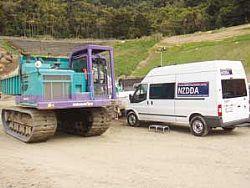THE problem of alcohol and drugs in the New Zealand workplace is increasing and should be of concern to all employers. Abuse is prevalent across all industry groups including the engineering and manufacturing sectors. The aim of any workplace drug or alcohol testing programme is to ensure that the company does not have a person ‘at risk’ whilst at work and any form of testing should not be seen as a ‘big brother’ approach. Left unchecked, the incidence of staff working while “under the influence” has the potential to result in serious harm accidents. What’s at stake for employers nowadays is the culpability of the company if anything bad happens as a result of drug or alcohol use in the workplace – and this does extend to company organised events or functions. Employers cannot afford to ignore the possibility that one of their employees may have a drug or alcohol problem, especially if there have been indications that all is not as it should be with that staff member. The Health & Safety in Employment Act 1992 and its amendments impose legal obligations on all employers to ensure the safety of employees while at work, requiring the identification of hazards and protection from those hazards. Drugs and/or alcohol have been listed as specific hazards in workplaces. It is widely acknowledged that an employee under the influence of alcohol or drugs is a potential hazard, both to him/herself, fellow workers and the general public. Nearly one in five workers tested for drugs following workplace accidents in 2005-2006 returned positive results. The New Zealand Drug Detection Agency’s (NZDDA) own statistics for 2007 showed that 10.3 percent of all workers tested returned positive results for drugs. Of that percentage, 67 percent was for cannabis and 16.5 percent was for methamphetamine, with a collection of other drugs making up the remaining 16.5 percent. When is the best time to create a drug and alcohol free workplace? Unfortunately the initial contact from some companies with the NZDDA for assistance is a reactive one – they’ve ignored a potential drug/alcohol problem until something happens. This is not the ideal time to introduce a drug and alcohol policy which is designed to work in conjunction with an employment agreement. Implementation of such a policy cannot and should not be rushed and it should be accompanied by education for all stakeholders with their full co-operation and involvement. Above all, the policy must be robust enough to withstand legal scrutiny. There are various legislative guidelines that must be taken into account before drafting and introducing a drug and alcohol testing policy which include the Health & Safety in Employment Act, Privacy Act, Human Rights Act, Bill Of Rights Act, and Employment Relations Act. NZDDA is an inventive New Zealand owned and operated company bringing professional drug and alcohol monitoring within the reach of all businesses and organisations. It offers drug and alcohol management services which include the development of drug and alcohol policies as well as hands-on personal training of management/supervisors and staff through drug education workshops. NZDDA also offers New Zealand’s only mobile testing facility for onsite screening and a complete range of drug and alcohol testing products.• reader enquiries quote: D090125
Dealing with drugs and alcohol in the workplace
General
Wednesday, 14 January 2009






